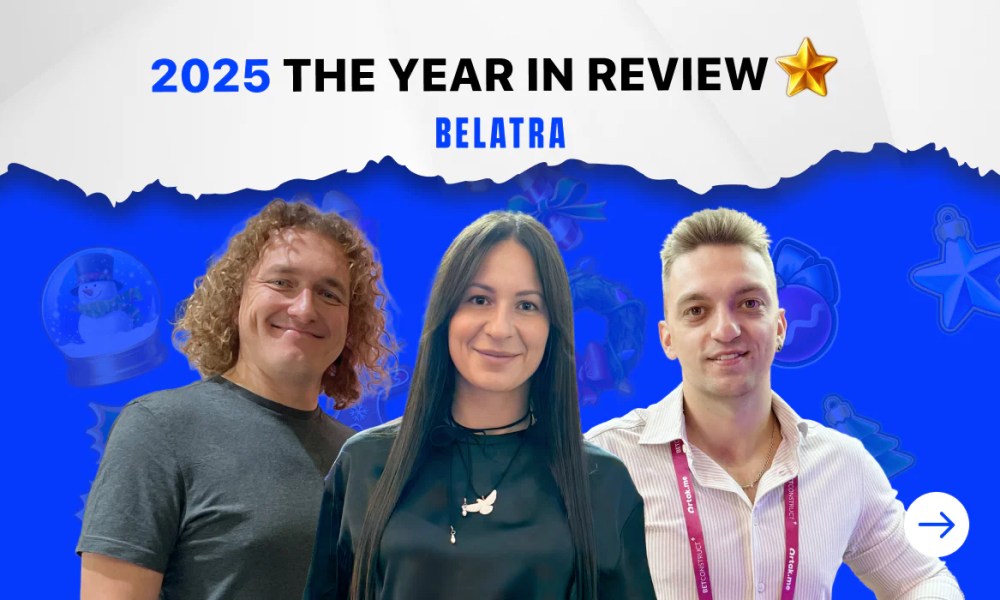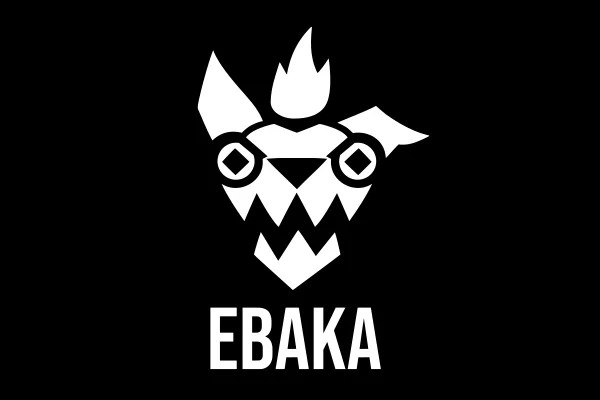Latest News
NSoft: Top 3 virtual draw-based betting games
The virtual draw-based betting games have been steadily thriving for years, and recently there has been a significant resurgence of bingo in online markets.
The exciting bingo-style games with colorful, eye-catching graphics also feature a host of bonuses and extra chances to win, thus the player’s favorite.
NSoft has its share of enchanting the players worldwide with our virtual draw-based betting games. With simple yet immersive gameplay challenges, our top 3 virtual draw-based betting games include Lucky Six, Roulette, and Spin and Win.
Bingo Type Games offer a Powerful Revenue-Generating Model
Fast-paced entertainment in virtual form brings bingo and lottery games to players every few minutes. The ability to enjoy the draws more than 280 times each day, combined with an excellent user interface, has proved to be a massive success with players and a revenue-generating model for our customers.
NSoft brings an omnichannel experience as our products are available on various channels, devices, and operating systems. Customers choose the delivery channel depending on their needs – land-based or online.
The action of virtual number games is based on the results produced by a random number generator (RNG). Approved testing laboratory for online gaming systems, iTech has confirmed that our games are statistically random and unpredictable. Thus the results cannot be influenced or adjusted.
Lucky Six – millions of tickets daily across 40+ countries
Our draw-based, bingo-style game Lucky Six recently celebrated its 12th birthday. It was our firstborn game and a solid foundation for soon becoming a successful business in the gaming industry on a global level. Everybody loves Lucky Six – millions of tickets are played daily across 42+ countries with our clients.
Since the V1, the game was simple, neat, running on any device, with good (configurable) RTP. The RNG-driven entertainment soon became a must-have for any betting shop. And yes, it was first made for bet shops.
Through NSoft’s years of experience in the iGaming market, with our partners, and 150 betting and gaming operators from 42 countries, we have gathered invaluable information from the players. Lucky Six’s secret – the players, helped us polish it!
Now we know what it takes to boost player engagement and retention levels. The game was renewed with visual enhancement, better performances, new bonus games, simpler UX, richer statistics, sound effects, etc.
How to play Lucky Six?
A total of 48 numbers are divided into eight groups. Every group has its color so that the player will find red, green, blue, purple, brown, yellow, orange, and black colored balls with numbers. In the hope of choosing the Lucky Six winning numbers, the player chooses six to ten numbers, and 35 out of 48 numbers will be drawn from the drum. To win the draw, the player has to guess six numbers correctly.
The global success of Lucky Six
Globally, the game is offered across 9,000+ bet shops and 4,800 terminals (28% increase YoY). The number of punters playing Lucky Six online reached impressive figures and held to it during 2020 and 2021.
As a result, the reporting period recorded 14% more tickets and almost 20% turnover (total turnover 2021 vs. 2020 in %).
To boost the game for the online channel, the NSoft team has created a Lightning Lucky Six – an even faster version of the original game. Another novelty in our growing Casino portfolio is a spin version of Lucky Six. The game is called Slingshot 6 and proudly represents the latest upgrade of our classic.
Slingshot 6 is a casino game for the online channel. It is a spin game based on bingo which brings diversity into inevitable video slots category and ultra-popular crash categories.
Roulette – the simplicity of this game attracts millions of players
The game of Roulette is one of those games that has barely changed over the centuries. It is often mentioned in mainstream media and movies, with references connecting it to luxurious casino resorts and lavish parties.
James Bond, 007, was a big roulette player in Ian Fleming’s original books, and his favourite number was 17.
If you visit any brick-and-mortar casino, you can see the crowd of people around the roulette table cheering every spin of the wheel. The game provides a unique excitement that is hard to surpass in other fast games.
Online Roulette has quickly gained popularity and is preferred over slots, blackjack, poker, and other casino games. Online casinos don’t have the same overhead expenditure as land-based casinos so they can offer better and higher payouts to players. Also, online casinos offer a variety of attractive bonuses and incentives to attract new players and increase overall retention.
Roulette is a fast-paced game of chance; players don’t need skills or experience to win this game.
European Roulette features a black and red colored wheel with numbers ranging from 0-36. It has one zero-number pocket, its most distinctive feature.
There are differences between European and American Roulette; thus, they differ in one way. It has an extra slot: Double Zero. Instead of 37, it has 38 slots — numbers 1 to 36, 0, and 00. The presence of an additional slot means American roulette has a higher house edge than European roulette.
Generally, we recommend our clients to use American Roulette in their retail business. Web and terminal businesses can opt for the one that suits their company or players more. Having both versions is also an option.
What are the advantages of NSoft Roulette?
NSoft’s Roulette is a fast-paced modular and engaging game that brings an entirely new experience to players. It is an appealing product, available and running smoothly on all channels. The game features a smooth and intuitive UX/UIX, easy to use for operators in bet shops and players on all channels.
It is a must-have product for our clients with the biggest RTP that simultaneously covers both virtual games and casino categories.
The game is round-based, meaning that all players play together in a single round, and features colourful visuals and eye-catching graphics. A customizable appearance enables a better product experience and generates revenue.
We are constantly working on improving Roulette on all channels by keeping in mind the feedback of our players and clients. Therefore our in-house Casino team once more showed enviable creativity by developing the Lightning Roulette game, as the name suggests, as fast as lightning and round-based.
Spin and Win – a high-speed and highly customizable modern take on Roulette
Anybody who has played our Roulette will enjoy it, even more, the gameplay and bonus options that NSoft’s Spin and Win offers.
Spin and Win was made exclusively for land-based betting businesses, and indeed, it is one of the best spin games in retail. The use of the newest technologies has enabled our Casino team with vast possibilities for development on various devices, even those with lower performance levels. The game is enriched with colorful visuals and eye-catching graphics. A completely customizable appearance according to market specifics and clients’ wishes enables a better product experience and creates revenue increases.
The visualization shows the paytable, the wheel, and the statistic in the stunning color palette. Visual presentation of the game plays a significant role when we talk about engagement. The wheel is always centered and visible whether the round has begun and marked with numbers ranging from 0 to 36. If the countdown for the next round is in progress, available markets on the pay table are highlighted from top to bottom, one by one, approximately every 3 seconds.
The game offers four markets: Straight up, Dozens (1, 2, 3), Odd/Even, and Red/Black.
The statistic displays the most and least drawn five numbers together with the ten latest results.
Powered by WPeMatico
Belatra Games
From ‘Mummyverse’ to Crash Games: Belatra Reviews a Landmark 2025

Editor’s Take
Why this matters: Belatra has been a steady hand in the slots world for a long time, but 2025 marked a distinct shift in strategy. By entering the Crash vertical with Goose Boom Bang and winning big at SiGMA Africa, the studio is clearly pivoting to capture the high-growth, high-frequency players in emerging markets. They are no longer just a “classic slots” developer; they are diversifying the portfolio to ensure relevance in regions like LatAm and Africa.
The Full Story
Belatra Games, the specialist online slots developer, has issued a strategic review of its 2025 operations, celebrating a 12-month period defined by entry into new game verticals, significant franchise expansion, and high-profile industry recognition.
The year was characterized by a dual strategy: deepening engagement in established markets while aggressively expanding its content portfolio to suit local preferences in emerging territories.
Portfolio Evolution: Crash and Battles 2025 saw Belatra move beyond its traditional slot roots. The company made its debut in the high-demand Crash game vertical with the launch of Goose Boom Bang, a title designed to tap into the fast-paced gameplay preference of younger demographics.
Additionally, the studio introduced a fresh game concept with the launch of Battles, a new format unveiled for the first time in 2025, with further development planned for 2026.
The ‘Mummyverse’ Expands For fans of classic slots, the highlight of the year was the aggressive expansion of the Mummyverse. Belatra nearly doubled the size of this franchise over the year, making it the most extensive game universe in their entire catalog.
The developer also focused on B2B localization, releasing a number of exclusive bespoke games created specifically for selected operator partners to meet specific local market tastes.
Awards and Recognition The company’s strategic shifts were validated by industry accolades. Belatra secured over 30 nominations throughout the year, with standout wins including:
-
Best Slot Provider (awarded by BitStarz).
-
Most Played Game of 2025 for Make It Gold at the SiGMA Africa Awards.
-
Player’s Pick Award.
Management Commentary Misha Voinich, Head of Business Development at Belatra, commented on the studio’s momentum:
“This year has truly defined who we are as a studio – ambitious, creative and focused on building long-term partnerships. We’ve expanded our universes, launched new ones and entered exciting new markets that will all help us carry this momentum into the New Year.”
The post From ‘Mummyverse’ to Crash Games: Belatra Reviews a Landmark 2025 appeared first on Gaming and Gambling Industry Newsroom.
BMM Testlabs
‘Chaos and Soul’: Ebaka Games Plots Global Expansion After Viral Launch

Editor’s Take
Why this matters: The “Instant Game” vertical (Crash, Plinko, Mines) is becoming crowded, but Ebaka Games is cutting through the noise with a distinct brand personality. By securing BMM Testlabs certification so quickly after launch, they are signaling to Tier 1 operators that despite their “chaotic” marketing vibe, the math underneath is solid and compliant. The backing of industry veteran Dmitry Belianin also adds immediate commercial credibility to the startup.
The Full Story
Ebaka Games, the fledgling studio that promises to bring “chaos and soul” to the iGaming sector, has outlined an aggressive growth strategy for 2026 following a landmark launch period in late 2025.
The studio, which officially debuted in November, reports that its initial rollout reached more than five million people worldwide. The launch saw its portfolio go live with the operator Menace, serving as the initial testbed for its mechanics and “Ebaka modes.”
The Product: Instant Games with Personality Ebaka is bypassing traditional slots to focus on the high-growth vertical of fast-paced, instant-win games. Their initial lineup includes:
-
Plinko
-
Mines
-
Tower
-
Limbo
-
Crash
Differentiation is achieved through unique mascots and signature gameplay tweaks designed to offer high win potential and distinct visual identities, moving away from the generic interfaces often found in this genre.
Regulatory Milestone Crucially for its 2026 roadmap, Ebaka Games has confirmed it has secured certification from BMM Testlabs. This accreditation validates the fairness and integrity of its RNG (Random Number Generator) and game engines, removing a major barrier to entry for regulated markets. With this certification in hand, the studio plans to launch with a number of “major brands” in the coming year.
Management Commentary Vitalii Zalievskyi, CEO of Ebaka Games, commented on the studio’s unorthodox approach:
“It’s only been a few weeks since we first introduced Ebaka Games to the world. The feedback has been breathtaking, and it vindicates the decision for us to take a different path to the rest of the industry. You don’t need huge marketing budgets to grab people’s attention if you are building something truly innovative.”
Industry Backing The studio describes itself as being “created by players for players” but boasts significant industry firepower in its corner. The team includes Dmitry Belianin, a well-known figure in the sector who is the co-founder of Blask and Menace, as well as Managing Partner at Already Media.
The post ‘Chaos and Soul’: Ebaka Games Plots Global Expansion After Viral Launch appeared first on Gaming and Gambling Industry Newsroom.
ARC
Racing Meets Nightlife: SBK Backs ARC’s New ‘Friday Night Live’ Series

Editor’s Take
Why this matters: British racing has a well-documented demographic problem; its core audience is aging. “Friday Night Live” is a direct attempt to fix this by blending high-stakes racing with the “experience economy” (DJs, nightlife vibes) that appeals to Gen Z and Millennials. Bringing SBK on board—a mobile-first, app-only sportsbook—is a perfect demographic fit, while the Racing Post adds the necessary credibility to ensure the actual racing product remains the focus.
The Full Story
Arena Racing Company (ARC) has unveiled the strategic commercial lineup for its upcoming Friday Night Live series, confirming SBK as the Exclusive Betting Partner and The Racing Post as the Official Media Partner.
Set to launch in January 2026, Friday Night Live is a new initiative created in collaboration with youth-focused events company INVADES. The series is designed to overhaul the traditional race day experience, featuring fast-paced fixtures under floodlights, DJ sets, and significant entertainment elements sandwiched between races.
The Commercial Deal
-
SBK: As the exclusive betting partner, the Smarkets-owned sportsbook will take naming rights and on-course branding for all 35 races. Crucially, these races will be broadcast live on mainstream television via ITV Racing as well as Sky Sports Research.
-
The Racing Post: As the Official Media Partner, the publication will provide content, coverage, and promotion across its digital platforms, aiming to bridge the gap between established racing purists and the new audience ARC hopes to attract.
A High-Stakes Experiment The series is not just a marketing exercise; it carries serious sporting weight. Each of the five scheduled nights will feature over £200,000 in prize money. The fixtures will rotate across three of ARC’s all-weather tracks: Wolverhampton, Newcastle, and Southwell.
Management Commentary David Leyden Dunbar, Group Director of Commercial Strategy at ARC, was clear about the target audience:
“We have been very clear that one of the aims of Friday Night Live is to engage the next generation of racing fans… Both [partners] have shown real enthusiasm to work with us… as well as using the platform that these fixtures will offer them to also engage with more established racing and sports fans.”
Adam Baylis, Marketing Director at SBK, added:
“Friday Night Live [is] a fresh and engaging concept that brings a new energy to British racing. SBK has always been built around sport… our focus is on enhancing the live race day experience in a fun, social and responsible way.”
The 2026 Schedule The series kicks off immediately in the new year:
-
9th Jan: Wolverhampton
-
6th Feb: Newcastle
-
20th Feb: Southwell
-
20th March: Wolverhampton
-
27th March: Newcastle
The post Racing Meets Nightlife: SBK Backs ARC’s New ‘Friday Night Live’ Series appeared first on Gaming and Gambling Industry Newsroom.
-

 affiliate marketing7 days ago
affiliate marketing7 days agoSOFTSWISS 2025: 45% Game Portfolio Growth, LatAm Extensive Expansion and Flagship iGaming Trends Report
-

 B2B7 days ago
B2B7 days agoXpoint secures new growth funding to supercharge geolocation innovation for real money gaming
-

 Aviator7 days ago
Aviator7 days agoTKO: SPRIBE names UFC fighter Valter “The Clean Monster” Walker as Aviator brand ambassador
-

 Brand Activation7 days ago
Brand Activation7 days agoEsportes da Sorte strengthens brand presence during New Year’s Eve celebrations across four Brazilian capitals
-

 BGaming4 days ago
BGaming4 days agoBGaming and Jon Vlogs Spread Christmas Joy with Charity Initiative
-

 B2B7 days ago
B2B7 days agoHoli Primed For Emerging Markets Via New QTech Games Partnership
-

 Blaze4 days ago
Blaze4 days agoBragg Gaming Rolls Out Exclusive Proprietary Titles via Blaze in Brazil
-

 Alex Leese7 days ago
Alex Leese7 days agoPronet Gaming’s New Global Chapter Begins at ICE 2026



















